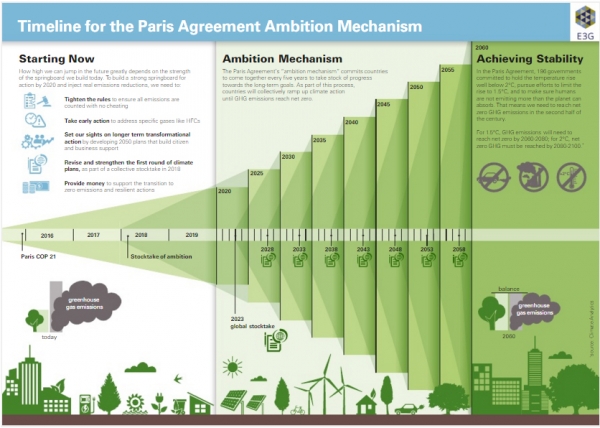Climbing mountains: UN talks post-Paris require new focus

Despite what Donald Trump may think, there’s no going back on the Paris Agreement. But the hard yards on making this historic pact work have just started.
The months of intense negotiations prior to December’s Paris Agreement remind me of a mountain I once climbed in Scotland.
It was a rapid and steep hike on the way up, shrouded in mist. Once I’d exerted all my energy to reach what I thought was the top, the mist cleared and I realised there was another peak waiting ahead.
The moment of the mist clearing is where we currently stand in terms of climate action – we have achieved a great deal, but are still far from achieving the goal we set ourselves at the beginning.
With all the glitz and glamour of Paris, you might be forgiven for thinking all the hard work is done. All that’s left is to enjoy the view. If only that were the case.
Instead we’re starting a new chapter, and the plot thickens. This is a new phase, more complicated than what has come before, as it’s about doing, learning and codifying at the same time.
Back on the mountain, we simultaneously must not stray from the path, keep-up the pace and adapt to the terrain as we go.
Despite what Donald Trump may think, there is no going back. Almost 200 countries have worked hard to reach the point at which the Paris Agreement has brought us and have no desire to go anywhere but forward.
Here in Bonn at the first negotiating session on climate since Paris, there is a sense that while the process ahead is challenging the path ahead is certainly clearer and more achievable than ever.
In this context decision makers can and must take early action to stand us in good stead in avoiding the unimaginable. And no time like the present, with last month the hottest April on record and the twelve previous months all breaking similar records.
So the work ahead in Bonn is certainly not just about discussing small print and the finer details of the Paris Agreement before it officially gears up after 2020.
It is about turning the framework that Paris provided into something immediate and actionable.
As the infographic below shows, we already know that thanks to the Paris Agreement, countries must meet every five years from 2018 to evaluate where we have come and what each nation must in turn do if we are to meet our overall target of saving the world from the worst ravages of climate change.
So in 2018 we have a moment to take stock of progress and build further ambition.
Yet in both the run-up and present, negotiators must be honest and true to the spirit of the Agreement. There certainly shouldn’t be cheating by governments, looking to give themselves room for manoeuvre.
We know that climate action is transforming our economies, and many countries especially the EU and China will almost certainly overshoot their current targets.
Celebrating this success, while ensuring these countries don’t use achievements as a way to gain negotiating wriggle room for an easier ride further down the line is crucial.
If we are to stand a chance of securing survival for the most vulnerable countries, honest emissions counting is also essential and will have a material impact on the atmosphere.
As Paris acknowledged, a proper and transparent process for verifying that these rules are being kept is essential. It’s now this must be agreed.
Paris likewise gave few details on flows of finance from richer to poorer countries. Its now that developing countries need a sense of the money available to them to catalyse their climate action and help them plan for action.
To guarantee early progress, developed countries will need to tell developing countries exactly how they will support them and through what means.
It is also important to add that we are not only talking about reducing carbon dioxide emissions.
While the Paris Agreement does refer to reducing ‘greenhouse gases’ in general, this year we must secure separate agreements on some of the most potent individual gases such as Hydroflurocarbons (HFCs).
We must also come up with a plan to tackle emissions from international transport, with the shipping and aviation sectors currently not integrating Paris into their work plans.
Paris delivered the long-term emission reduction goals, obliged countries to plan their climate action up to 2025/2030, and ensured countries will gather every five years to ‘ratchet-up’ their pledged action to greater levels. This was clear progress.
Now nations will also need to look further ahead and work out what their economy must look like in 2050 if we are to escape the worst of climate change.
Done well, the 2050 plans offer an opportunity to engage the public in a visioning exercise, linked to the UN’s Sustainable Development Goals agenda and sowing the seeds for a much deeper and wider social appetite for ambition.
So in addition to the summit we must all scale together – limiting climate change as much as possible and adapting to the change we cannot prevent – each country also has its own mountain to climb.
This will be steeper for some than for others.
But now more than ever before, in both international fora like the UNFCCC negotiations and in the domestic sphere, each nation must work in earnest to plan its route and start the climb up the next ascent.
* Liz Gallagher is a senior associate at the London-based environmental thinktank E3G.

Facebook comments